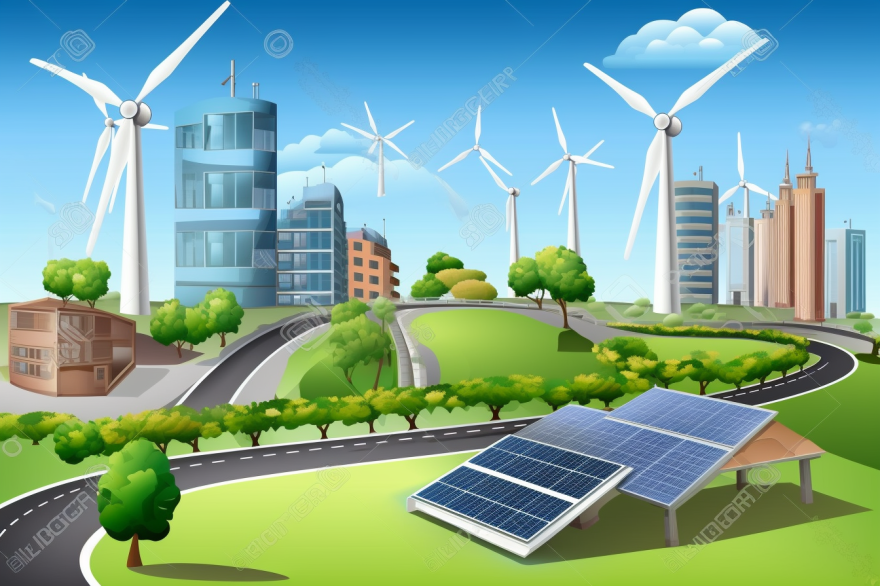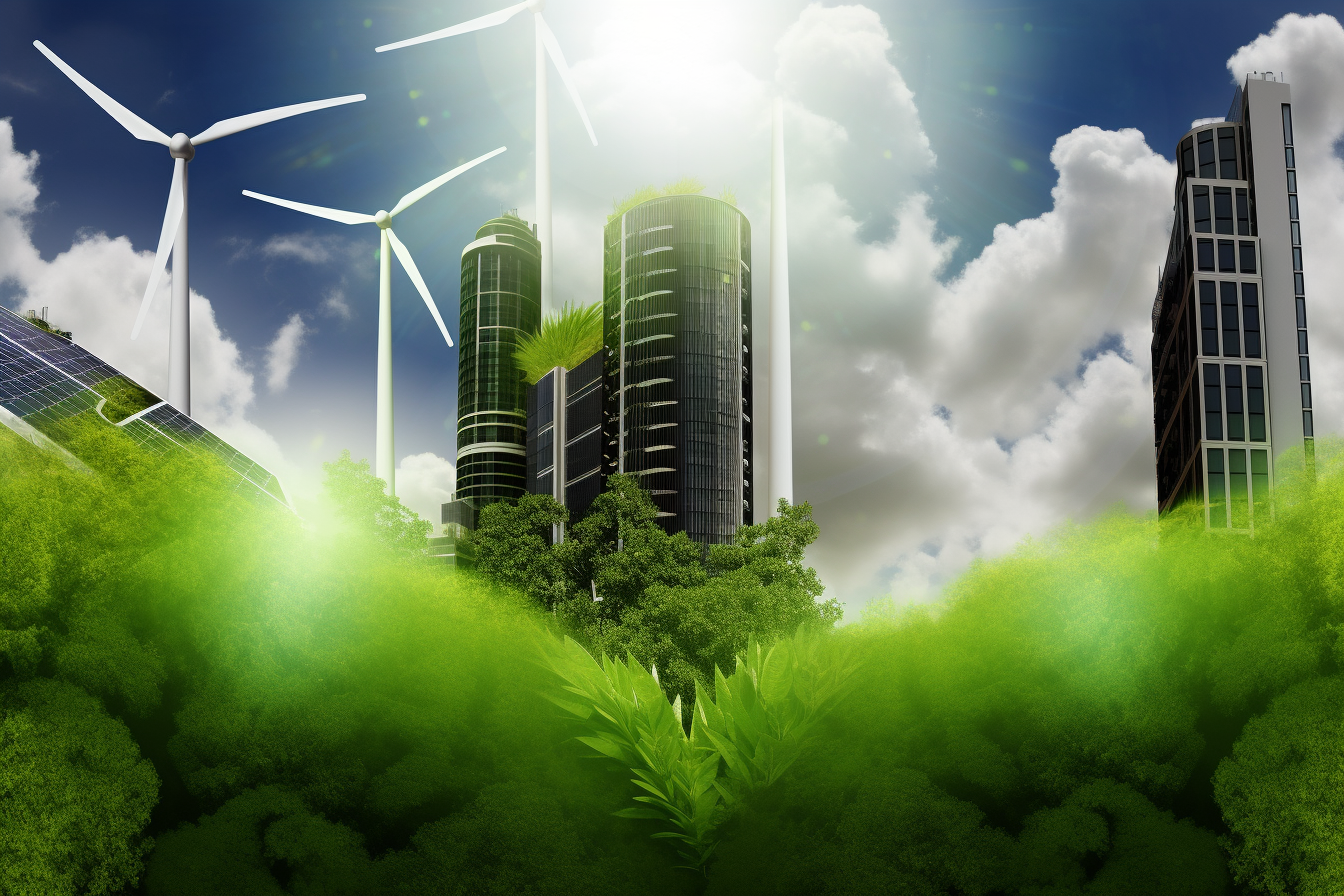Summarize
- LED-tekniikka on energiatehokkaampi kuin perinteiset valaistusratkaisut
- LED-valot vähentävät ympäristövaikutuksia ja parantavat kierrätysmahdollisuuksia
- Pitkä käyttöikä ja vähäinen huoltotarve ovat LED-valaistuksen etuja
- LED-valaistus parantaa valaistuksen laatua ja mukavuutta
- LED-tekniikka tukee kestävää kehitystä ja taloudellista kasvua
LED technology has taken huge leaps forward in recent years, and the role of LED technology in sustainable development is even more important than before.
This article is part of a series of articlesentitled ”Future prospects for LED technology”.
The role of LED technology in sustainable development
Where traditional incandescent bulbs and fluorescent tubes have been known energy guzzlers, LED lighting offers a much more efficient and environmentally friendly alternative.
This means we don’t have to compromise on lighting quality or comfort while reducing electricity consumption and our carbon footprint.
Sustainability is also promoted by the fact that LED lamps have a much longer lifetime than conventional lamps – up to tens of thousands of hours!
As a result, the consumption of materials and the increase in waste associated with their production will be kept under control.
In addition, modern LEDs do not contain harmful substances such as mercury, which facilitates recycling and reduces the risk of polluting the surrounding environment.
In conclusion, the increased use of LED technology is key to moving towards a more sustainable future.
Energy efficiency and savings
Energy efficiency and savings are key factors in sustainable development, and LED technology offers significant energy saving potential.
Lighting accounts for around 15% of global energy consumption, so using more efficient lights can lead to significant savings both economically and environmentally.
Innovations in LED lights have been revolutionary in this respect, as they consume a fraction of the energy of traditional incandescent or fluorescent bulbs.
The benefits of LED lights are not limited to energy and cost savings, but also have other positive environmental impacts.
For example, mercury-free LED lamps reduce the release of harmful chemicals into the environment and improve recycling opportunities.
In addition, a longer lifetime means less frequent lamp replacements, which reduces the amount of waste material and resource consumption in production.
Overall, the increased use of LED technology will make a significant contribution to sustainable development through energy efficiency and savings.
Reducing environmental impacts
Reducing our environmental impact is a key part of sustainable development, and LED technology can help in many ways.
One major advantage is energy efficiency: LED luminaires consume up to 80% less energy than traditional incandescent lamps, which reduces both the carbon emissions from electricity generation and operating costs.
In addition, environmentally friendly materials are an essential part of eco-design, and many new LED products use recycled or bio-based plastics, for example.
Another important aspect of reducing environmental impacts is the management of the product life cycle.
Today’s innovative recycling methods enable more efficient reuse of materials and minimise waste generation.
For example, many LED manufacturers aim to follow circular economy principles when designing lights that can be easily dismantled and separated for recycling.
At the same time, the longer lifetime – typically around 25 000-50 000 hours – also reduces the need for lights replacement and the associated environmental impact.
Therefore, the use of LED technology is a step towards a more sustainable future, where energy is saved, materials are used efficiently and environmental impact is minimised.
Long life and low maintenance
Have you ever wondered how important the durability and maintenance-free nature of lighting is? LED lighting offers the kind of innovative solutions that help us achieve our sustainability goals. This technology can also improve energy efficiency and reduce environmental impact.
Long life and low maintenance are two key features that make LED technology stand out in sustainable lighting:
- Energy saving:
- The lifetime of LED lamps is several times longer than that of traditional incandescent lamps.
- They consume only a fraction of the energy of older light sources.
- Freedom of maintenance:
- Thanks to the long life, the interval between lamp replacement and maintenance is significantly extended.
- Less maintenance means lower maintenance costs and better long-term reliability.
- Environmentally responsible material choices:
- Contains no harmful substances such as mercury or lead.
- The possibility to recycle and reuse materials.
The benefits of LED technology are not limited to energy savings or reduced environmental impact. It also offers opportunities to create a more comfortable and healthier lighting environment that can improve people’s quality of life and productivity in different spaces. Although LED lighting is here to stay, research is ongoing to develop even more efficient and sustainable solutions for the lighting of the future.
Improved lighting quality
Moving on to the subject of longevity and low maintenance, it is also worth considering the improved lighting quality offered by LED technology. One major advantage is that LED luminaires designed to promote sustainability can provide more comfortable and better quality light than conventional lamps. As a result, they add to the comfort and aesthetics of the lighting.
Innovative applications, such as intelligent lighting systems and different colour spectra, will allow for a more versatile use, both in terms of energy and resource efficiency. The table below shows three key features associated with improved quality of LED lighting:
| Feature | Traditional Light | LED Light |
|---|---|---|
| Colour temperature | A more limited scale | A wide range |
| Colour Rendering Index (CRI) | Weaker | Higher |
| Dimmer compatibility | More limited | Wide compatibility |
From these features, you can see that LED lighting offers a wider range of possibilities for light control and colour management. As a result, we can create more comfortable and adaptable environments, both at home and at work. From a sustainable development perspective, this means not only saving energy and materials, but also a better quality of life for people.
Facilities for health and safety
Healthier and safer premises are vital for people’s well-being and the environment. LED technology allows us to achieve these goals effectively, offering many advantages over conventional lighting, such as energy savings, a reduced carbon footprint and a long lifetime. Improving safety and increasing health benefits are particularly important.
LED lighting can create better conditions both at home and in the workplace:
- Energy efficiency: LED lamps consume up to 90% less energy than incandescent lamps.
- Longer lifetime: the average lifetime of LED lamps is around 25 000 – 50 000 hours.
- Better light quality: LEDs produce a more even and pleasant light without distracting flicker or colour variations.
- Flexible adjustability: the LED lights can be easily dimmed and controlled by smart devices to suit different moods and needs.
- Protecting the environment: no harmful substances such as mercury are used in the manufacturing process and the long life of LED lamps reduces waste.
Together, these benefits create a healthier and safer environment for all of us. They will also contribute to a more sustainable future globally, which is crucial to overcoming the challenges of climate change today. LED technology is therefore an excellent choice both at the individual level and for society at large.

Economic benefits and employment impact
Therefore, creating healthier and safer spaces with LED technology not only supports environmental sustainability, but also human well-being.
Let us now look at the economic benefits that the achievements in this area can offer.
LED technology offers a wide range of innovation opportunities that directly contribute to economic growth and employment in the regions.
For example, setting up new businesses or developing business ideas from existing ones often requires a skilled workforce.
Workforce training in the LED sector can improve professional skills and make our experts more attractive to international investors.
In addition, the introduction of different technological solutions will create new opportunities for the expansion of services and thus help to increase the competitiveness of our regions on a global scale.
Implementing social responsibility
Achieving social responsibility is an essential part of sustainable development, and LED technology offers many opportunities to achieve this goal.
For example, social impact analysis can help identify areas where LED lighting can improve people’s quality of life and well-being. Such areas could include, for example, training opportunities for communities or energy efficiency projects.
Led technology can help to improve resource efficiency and reduce both the economic and environmental burden by:
- Energy savings: led lighting consumes significantly less energy than conventional light sources.
- Longer life: the long life of LED lamps reduces waste and the associated costs and environmental damage.
- Reduced emissions: reduced electricity demand leads to lower carbon dioxide emissions, which in turn mitigates climate change.
With enhanced resources, companies not only improve their environmental performance, but also contribute to their social responsibility by providing a better quality of life for local residents. This can take the form of increased safety at night thanks to LED lights or the creation of new jobs through the development and application of LED technology.
LED technology is therefore not only an environmentally sustainable solution, but also supports people’s social well-being and economic success in many ways.
Frequently asked questions
How does LED technology differ from traditional lighting solutions such as incandescent and fluorescent lamps?
Innovations in LED technology have brought significant differences compared to traditional lighting solutions such as incandescent and fluorescent lamps.
Firstly, LED lights use significantly less energy than incandescent or fluorescent lamps, leading to improved energy efficiency and savings in energy costs.
In addition, LED lamps last longer, so their replacement intervals are shorter, reducing their environmental impact.
Unlike incandescent lamps and fluorescent tubes, which produce a lot of heat energy while producing light, LEDs convert most of the energy they input directly into light with little heat generation.
This makes them safer to use and reduces the need for air conditioning in areas where lighting is a key part of the interior design or activity, for example.
Overall, LED technology offers many advantages over traditional lighting solutions, especially in terms of energy efficiency and sustainability.
What are the health effects of LED lighting compared to other types of lighting, for example on eye strain or sleep quality?
LED lighting has many positive health benefits compared to traditional lighting such as incandescent and fluorescent lamps.
One major benefit is reduced eye strain, as LED lamps produce a more even and flicker-free light. Eye protection is especially important when working for long periods of time with display screens or in other situations where you are exposed to strong light.
In addition, LED lights do not contain ultraviolet (UV) radiation, which can cause harmful effects to humans in the long term.
In terms of sleep quality, LED technology offers the potential for better night lighting by providing dim, warm-coloured lights that do not interfere with people’s natural sleep rhythms in the same way as, for example, blue or cool-toned lights.
How easy or demanding is it to install and commission LED lighting in different spaces such as your home, office or public spaces?
The installation and commissioning of LED lighting in different spaces, such as the home, office or public spaces, is usually quite easy and hassle-free.
The energy efficiency of LED lights makes them an attractive alternative to traditional lighting types, as they consume less energy and last longer.
In addition, the adjustability of LED lighting allows you to adapt the colour and intensity of the light to your needs.
This makes LED lights very suitable for a wide range of applications, whether it’s mood lighting in the living room or efficient task lighting in the office.
The installation process may vary slightly depending on the type of LED lighting you want to use (e.g. strip or panel lights), but in most cases it does not require a high level of technical knowledge and does not pose significant challenges, even for beginners.
What is the life-cycle carbon footprint of LED lighting compared to other lighting technologies, taking into account raw material sourcing, production, transport, use and recycling?
The life-cycle carbon footprint of LED lighting is often significantly lower compared to other lighting technologies such as incandescent or fluorescent lamps. This is because LEDs have significant energy-saving potential and can produce the same light output as other technologies with much less electricity.
In addition, the cost of LED lighting has fallen in recent years, making their use more attractive both economically and environmentally. Minimising life-cycle emissions includes the stages of production, transport, use and recycling, starting with the sourcing of raw materials.
While the manufacturing process of LED lamps may require more energy compared to conventional lamps, this difference is quickly compensated by their long lifetime and efficiency – so the overall impact on the climate is positive.
What aesthetic and design possibilities does LED offer?
The aesthetic innovations and design impact of LED lighting offer many opportunities to create both beautiful and practical lighting solutions for different spaces.
This technology can be used to create thin, lightweight and flexible light sources that are ideal for architectural lighting or works of art, for example.
In addition, the colour rendering properties of LEDs allow for better colour reproduction and mood creation in spaces.
Improved energy efficiency is also a major consequence of these new design options, which in turn will reduce their life-cycle carbon footprint compared to traditional lighting technologies.
Conclusion
LED technology offers us the opportunity to reduce our energy consumption and carbon footprint significantly compared to traditional lighting solutions.
It’s also a safer option for our health, as it causes less eye strain and can improve sleep quality. We should definitely consider introducing LED lighting in our homes, offices and public spaces.
In addition to saving energy and money in the long run, we can enjoy the wide range of aesthetic and design possibilities that this technology offers.
If you found this article interesting, you might also like the other parts of the series:
Led lighting innovations and new applications
Future environmental impacts of Led lighting
LED lighting expert
LedStore has been an expert in LED lighting and lighting design since 2010. We have our own product design, so our products are technologically state-of-the-art. Products have quarantee for up to 7 years. We also carry out lighting maintenance.
We focus on temperature-controlled and high colour rendering lights, so they work brilliantly and last a long time. We do around 500 lighting designs for our clients’ sites. Read more here or order a lighting design
We offer a service of custom-made LED strips, i.e. custom-made LED strips in aluminium profile. Also installed. Did you know? LedStore offers lighting design from 99 euros for the whole house!
Remember that we are always ready to offer our help to you along the way, by email (myynti@ledstore.fi) and by phone (045 251 4510). As always, feel free to share photos of your own projects on social media at ledstore.fi at Instagram and ledstore.fi at Meta. We love to see the cool things done by our LEDs, and it also helps to provide inspiration for those who are not sure about the power and awesomeness of LEDs. Did you know that we already have over 3500 pictures of our LED installations in our Gallery!
Photo gallery of Led lights:
Product gallery: Pictures of products in different installation locations
Indirect light: Indirect light in different spaces
Room-specific: Light in different rooms
References: Complete houses that have been photographed


